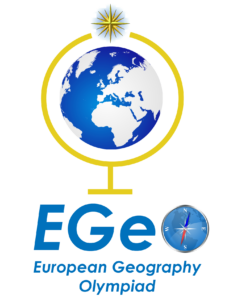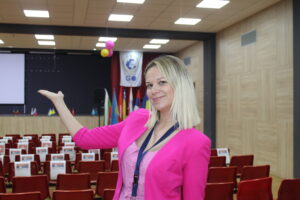RULES OF THE COMPETITION
*Rules Of Competition; The European Geographic Olympiad
The European Geographic Olympiad:
- originates fromthe Balkan Geography Olympiad, which was first organized in 2015;
- extends the continuity of theBalkan Geography Olympiad.
The aims of the Olympiad are to:
- A. allow young people from different countries to make social contacts and thus contribute to the understanding among the nations;
- B. stimulate active interest in geographical and environmental studies among young people;
- C. help in highlighting the importance of geography as a science among young people;
- D. serve students as guidelines for participation at higher levels of competition in geography.
Article 1.
The Geography Olympiad of Central, South and South Eastern Europeis essentially an individualcompetition for the studentsfrom 12 to 19 years of age, where their geographical knowledge and skills are tested. The Olympiadis a contest of students of two age groups:
- juniors – 12 to 15 years of age
- seniors – 16 to 19 years of age
Article 2.
The official language of the European Geographic Olympiad is English.Students must be able to answer test questions in the official language (English).
Article 3.
The European Geographic Olympiad consists of a competition, social activities and excursions.
Article 4.
Each participating country sends maximum two teams for each age category group. A team is made up of four students.
The LOC, depending on organizational capabilities, can increase the number of teams for participating countries. Every year this is stated in the REGULATIONS of the organizer.
Article 5.
In addition to the students, two adult team leaders are invited:
- They must be involved in geography teaching in their country;
- Each of them must be able to speak and write the official language of the Olympiad (English).
Article 6.
Tests
A). The tests of the Olympiad are as follows:
- written test,
- multimedia test,
- fieldwork exercise.
B). The marks assigned for the Olympiad are:
- written test (40% of total mark),
- multimedia test (20%) and
- fieldwork exercise (40%).
The three test elements are preferably organized on different days, which may be any day of the week. The examples of previous test questions can be found on the Olympiad’s website.
Article 7.
The Olympiad tests
We expect the participants to show that they can apply their knowledge in concrete regional contexts and use geographical skills; we do not intend to test only the theoretical geographical knowledge of participants about the topic. The contextscan be presented using maps, figures and graphs. The Multimedia Test consists of the questions that require basic geographical thinking skills, where the contestants analyze the information in maps, diagrams or photographs. Thus, the Multimedia Test does not intend to test the ability of the contestants to reproduce geographical facts but to test their skills in geographical analysis.
A). Guidelines for the Tests
The themes from which the questions in the Written Response Test and Multimedia Test of the Olympiadwill be chosen are:
- climate and climate change
- hazards
- resources
- environmental geography
- landforms
- agricultural geography
- population
- economic geography
- development geography
- urban geography
- tourism
- cultural geography
Required skills:
- map skills
- inquiry skills
- graphic skills (read, analyze and interpret images, photos, statistics, graphs)
B). The Written Response Test:
- consists of 6 themes about issues that are geographically and socially relevant, require topical and applied geographical knowledge and geographical skills, and deal with physical and human geography
- each topic has several resource materials such as maps, photos, graphs, statistics
- each topic consists of several questions that are based on the resource materials, range in length from short answer to paragraph length, may involve completion of a matrix or a table and the manipulation of data (e.g. from tabular to graphic form)
- the choice of the 6 topics from the list of 12 is made by the committee that designs the test
The Written Response Test is compiled specifically for both age categories in accordance with the students’ abilities.
C). The Multimedia Test consists of:
- 40 items about issues that are geographically and socially relevant, require topical and applied geographical knowledge and geographical skills, and deal with physical and human geography
- each item consists of a map and/or digital photo, film or graph and a short question
- the test will cover all 12 topics from the list
The Multimedia Testis compiled specifically for both age categories in accordance with the students’ abilities.
D). The Fieldwork Exercise consists of:
- Observation and mapping
- Analysis of spatial issue in fieldwork area including additional data gathering
- Problem-solving exercise leading to a proposal including a spatial plan or map
Step 1: a mapping exercise of (a part of) the fieldwork area
Skills that are required during the mapping exercise are:
- observation
- naming the observed phenomena
- locating the phenomena on the map
- usingappropriate graphic symbols
- describing the phenomena in the map key, using scale and orientation
Students could, for instance, be provided with a base map and asked to add information to it using appropriate cartographic skills.
Step 2: in the fieldwork area there is a (real or hypothetical) spatial problem that will be presented to the participants. The case relates to physical and/or environmental planning. The case/problem will be introduced and documented to the participants as well as the procedures and conditions for working on the problem-solving exercise.
Step 3:on the basis of the mapping exercise and the analysis of all the information about the case, the participants have to design a spatial plan (map) that tackles the problem presented, and give an explanation of the choices made. The explanation needs to show that the participant has understood the nature of the problem and made connections between theproperties/qualities of the fieldwork area and the suggested spatial plan. In the explanation, the use of graphic material (diagrams, photos, graphs, statistics) is preferred over lengthy texts. The map (spatial plan) is mandatory; the choice of the nature of the additional information is up to the participants. The criteria for marking the final product will be explained to the participants beforehand. The following products will be marked:
The result of the mapping exercise – a map of (a part of) the fieldwork area and the result of the problem-solving exercisewhich includes a short analysis of the nature of the problem, objectives of the proposal, visualisation of the proposed solution in the form of a map or plan, an explanation and underpinning of suggested plan/measures/activities.
The Fieldwork Exerciseis compiled specifically for both age categories in accordance with the student’s abilities.
Article 8.
The financial principles
The country which sends the students to the Olympiad pays:
- the travel costs, insurance and, if applicable, visa costs of the students and of all accompanying persons to the place at which the Olympiad is held;
- a fee to the local organiser for each student and adult as a contribution to other costs.
- The local organiser covers all other expenses incurred in holding the Olympiad


